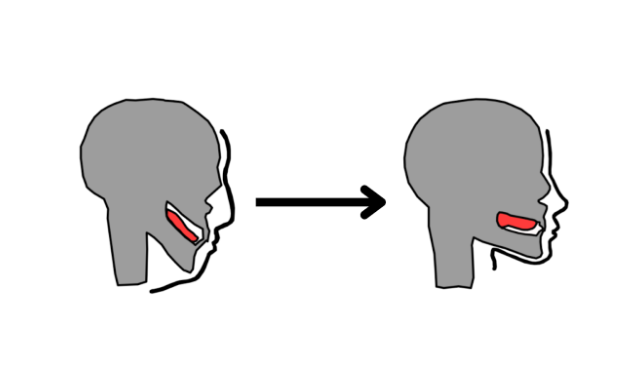Step one: keep your mouth closed with your teeth gently touching; breathe through your nose instead of through your mouth.
Step two: place your tongue on the roof of your mouth with the tip of your tongue barely touching your teeth.
Step three: swallow and ensure that the back of your tongue stays flat to the roof of your mouth; breathe through your nose.
Step four: shush the doubters and slide your finger along your newly accentuated jawline.
Those are the steps to the newly popular exercise, mewing, a term many have found themselves in a spiraling internet loophole searching for.
Users on the video-sharing platform TikTok have noticed the sudden rise of the term, learning that it is an oral posture training method coined after its creators, orthodontists John and Michael Mew. The term first gained popularity in 2019 when creators shared it on various social media platforms. Only recently, however, has the exercise gained real traction along with the “looksmaxxing” trend, where netizens attempt to maximize their looks through various trends and methods.
Mewing is explained as putting your whole tongue on the roof of your mouth and swallowing to keep it sealed there, where it is reportedly supposed to improve one’s appearance, especially in the jaw region. Countless sources online show people turning from regular individuals to supermodels from just the effect of mewing. However, there is no objective scientific evidence that mewing leaves one with lasting effects. The only proven results shown by mewing are temporary and only applicable to look slightly better in photos.
WebMD says, “There is no serious research that suggests mewing can change the shape of your jawline or help with other issues.” No credible sources support the miraculous effects of mewing except for the creators themselves and untrustworthy content creators looking for views, and in the modern age where most people get their information from select online people, the promises made about mewing can be incredibly deceptive.
A study done by the University of Michigan Medicine found that 64% of parents report that their children have a negative body image of at least one of their features. Children, especially teenagers, evidently struggle with their appearance. Consequently, a trend promising to improve one’s appearance and make them more appealing with little to no cost easily caught on with teens, misleading them.
Many individuals who argue for the benefits of mewing point to the numerous personal accounts of mewing benefits. However, mewing has existed since the 1970s and there has not been a single piece of scientific evidence proving the effectiveness of the exercise—the existing “proof” consists of various images with dubious validity that are instead likely before-and-after results of plastic surgery.
Additionally, the idea behind mewing is that it can alter one’s jaw to make it more sharp, which is impossible. Rochester Advanced Dentistry states that it is unlikely for one to be able to tone their jawline through exercises, as none of the jawbone muscles, which mewing does not activate, are even along the jawline.
While there are no glaring downsides to mewing, when children are exposed to so much content showing the impossible outcomes of the exercise, only to be disappointed, their already negative self-image is likely to fall even further. The promotion of mewing as a transformative method without factual scientific backing is not only deceitful but leads to further body image issues for teens. Thus, students should understand that while mewing can be a fun joke shared between friends or a way to augment their appearance in a yearbook photo minutely, it is ultimately an ineffective sham.
The next time you enter your classroom and see your friends shushing one another and swiping their fingers, remember ultimately that your appearance does not define who you are, and chasing after unproven trends like mewing can lead to consequences.


Shayaan Doodekula • Apr 24, 2024 at 12:01 pm
I feel like mewing is a joke
Greg Heffley • Mar 28, 2024 at 4:35 pm
🤫🧏♂️